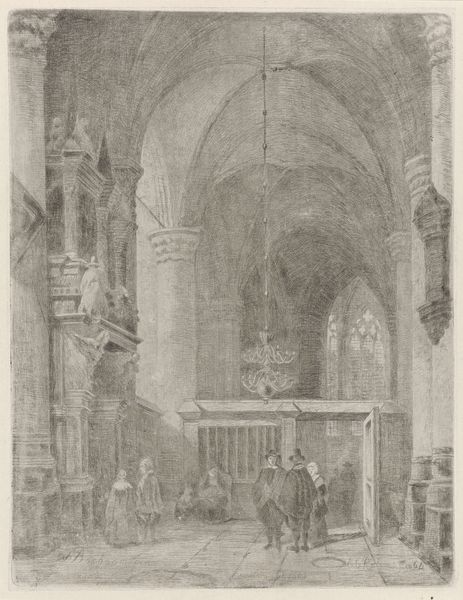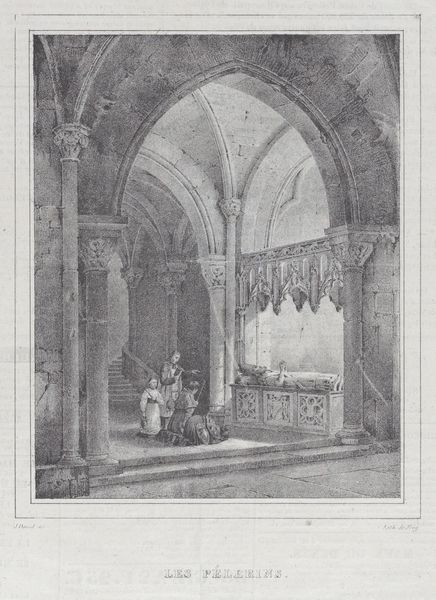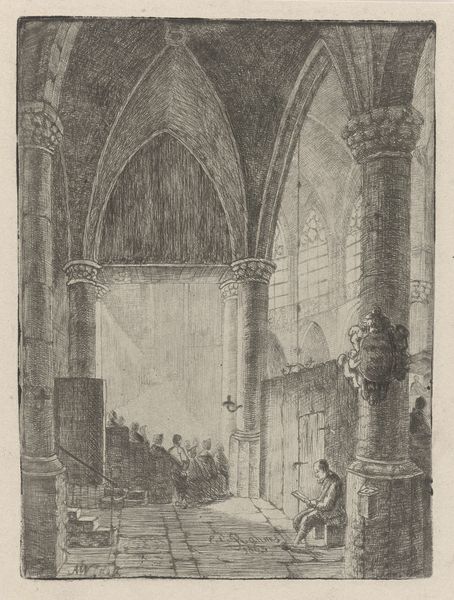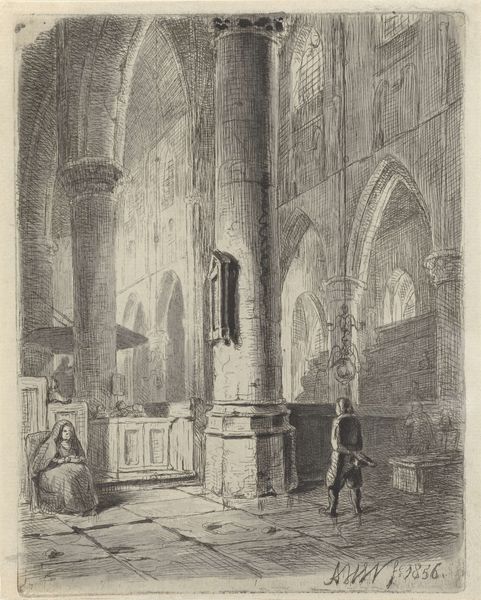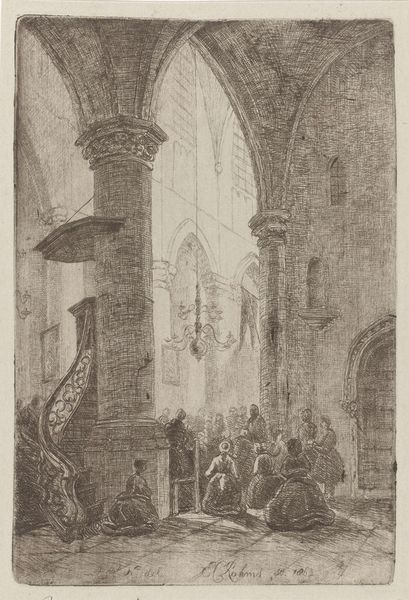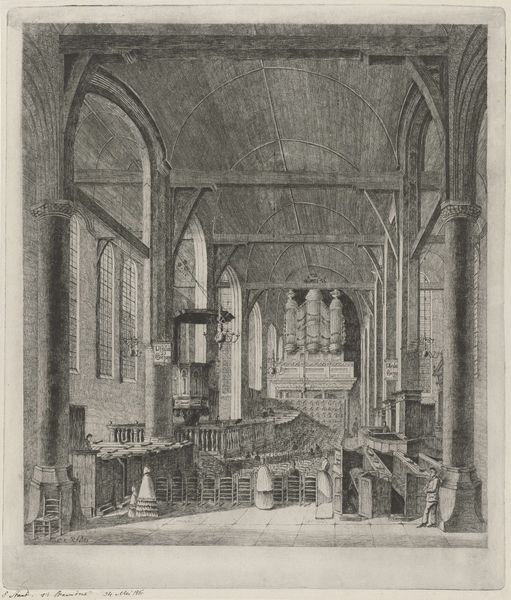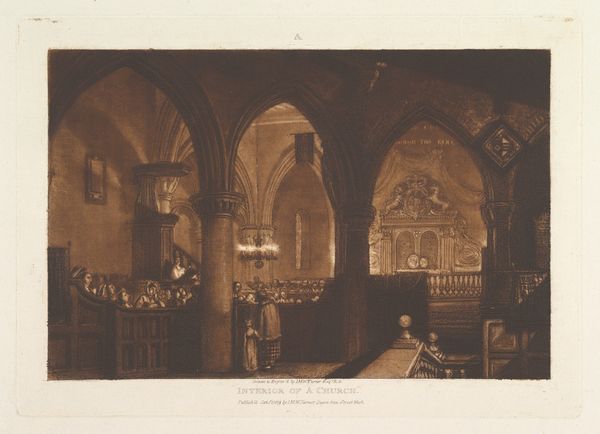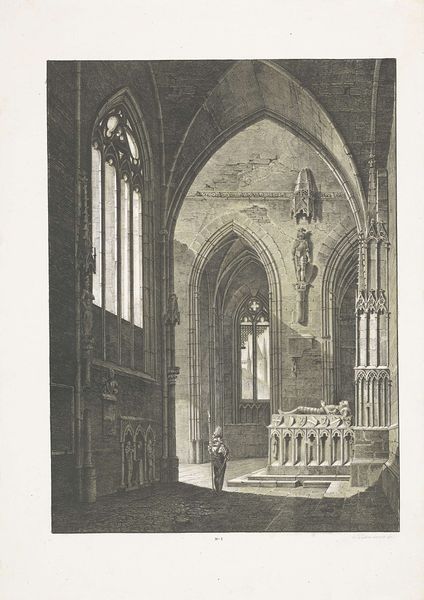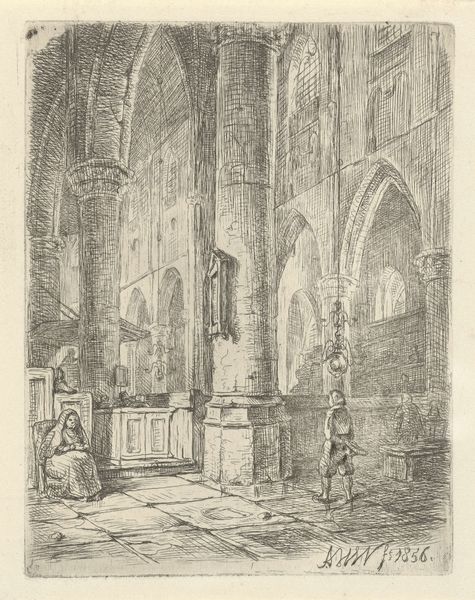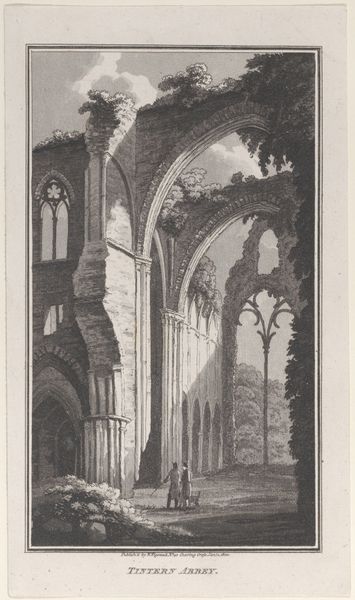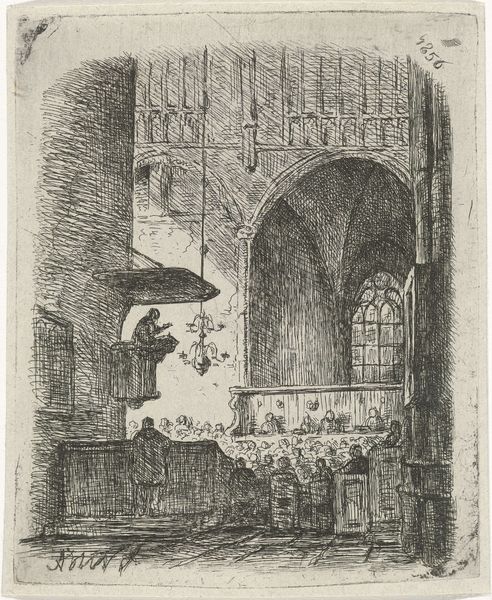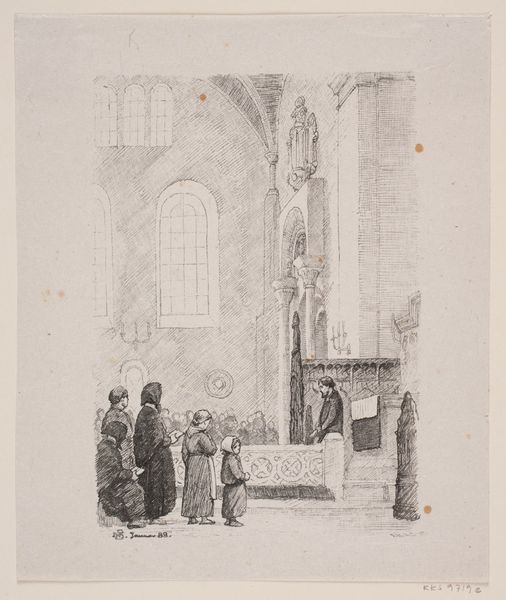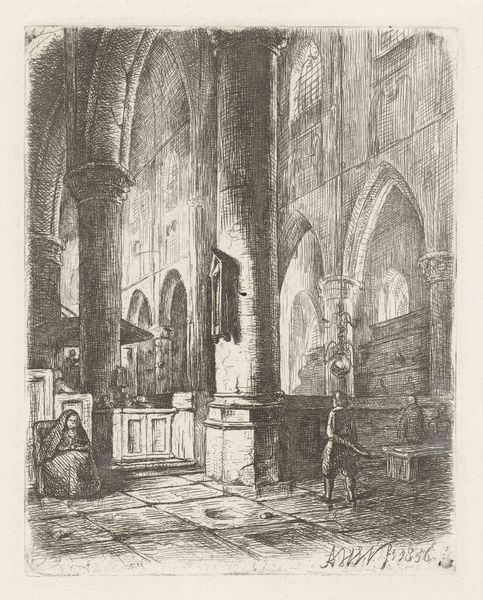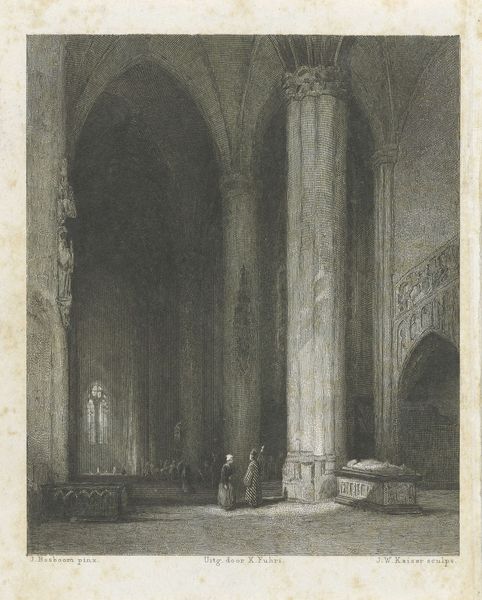
Dimensions: height 186 mm, width 146 mm
Copyright: Rijks Museum: Open Domain
Editor: Here we have Eberhard Cornelis Rahms' etching "Kerkinterieur" from 1863. It depicts the interior of a church and gives the impression of a quiet moment amidst grandeur. What do you see in this piece? Curator: What strikes me immediately is the intersection of power, religion, and social dynamics made visible through the architecture and the figures within it. The Baroque style church, while visually stunning, was often a symbol of religious and political control. Notice how the light falls, almost theatrical, emphasizing the separation between the clergy and the congregation, and perhaps even hierarchies within the community. Who was Rahms and what social strata did he come from? Editor: Not much information is provided. It would be great to know about his background and the intentions behind creating this print. Curator: Exactly! Was Rahms critical of these power structures, or simply documenting the space? Look closely at the figures – are they active participants or passive observers? Their positioning in the space tells a story, perhaps about inclusion, exclusion, or the performative aspects of religious practice. We could look at clothing to understand gender. What is that saying, how much liberty they can have within this building? Editor: It's fascinating how the artist captured a specific historical context and embedded social commentary. I’ll pay attention to those details going forward. Curator: Precisely! By understanding these layers, we move beyond mere aesthetic appreciation and engage with the artwork as a historical and social document, sparking dialogue about relevant and ongoing issues around religion, class and cultural dominance.
Comments
No comments
Be the first to comment and join the conversation on the ultimate creative platform.
